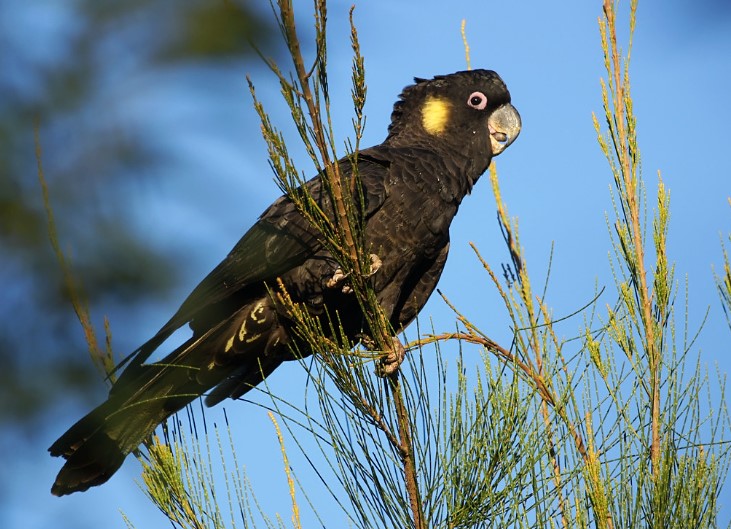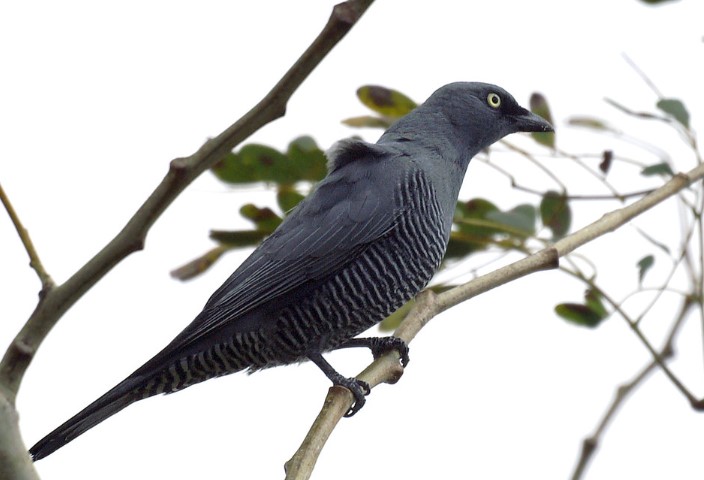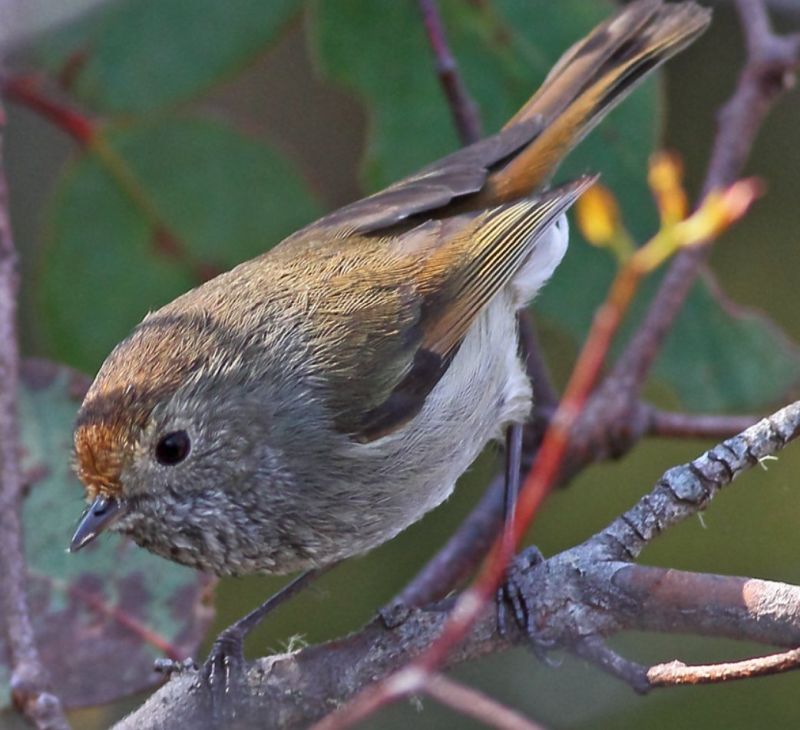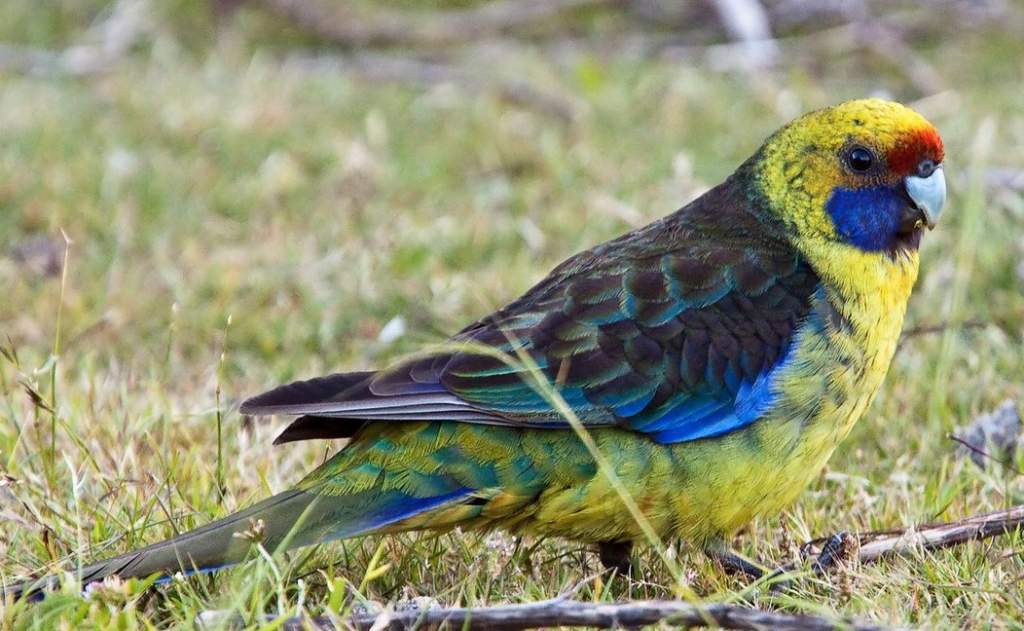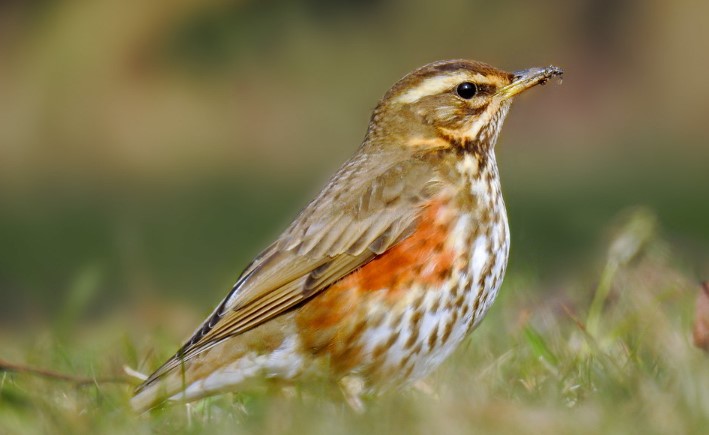The sustained fluted piping of the Pied Butcherbird (Cracticus nigrogularis) is one of the purest sounds uttered by any Australian bird. Ringing through the morning air, it is given by male and female-often in antiphonal duets-from high set perches at dawn to signal territory. The birds stand with heads thrown up, ducking and stretching with the flow of notes.
During breeding, singing continues at irregular intervals through the day and even into the night. Pied Butcherbirds live in more open woodland than other butcherbirds and have spread in southwestern Australia with clearing for farming. Arboreal and hunting by perch-and-pounce, they sit out in open places, often on posts in plowed fields or pasture, and spiral down onto prey.
From point to point they fly swiftly and low in long undulations, usually swooping steeply up to a perch with wings spread to show their back pattern; it signals their new position. They are aggressive hunters, picking off large insects, mice, nestlings, and reptiles, and even chasing small birds in flight.
The beautiful pairs often hunt together, one backing up the other. Pied Butcherbirds hold permanent territories but are more communal than other butcherbirds, and often live in family parties of three to five-the breeding pairs and they are young by several years. Young birds do not gain adult plumage until their second annual molt and help their parents feed later broods of siblings. This bird is also known as Black-throated Butcherbird, Black-throated Crow-shrike, Break-o’day Boy, Organ-bird.
The size of the Pied Butcherbird is about 320-360 mm in length. ADULTS: Both sexes are similar. The head, neck, upper back, throat, and breast are black. Collar, rump, lower breast, and belly are white. The wings are black with a broad white bar through secondary coverts to secondaries; base primaries edged white. The tail is black, tipped white on outer feathers.
The eyes are dark brown with blue-gray bill tip hooked and black. The feet are black. IMMATURES: Black areas of adult’s dull brown; eyebrow buff-brown. Very young birds have no sign of a darker ‘bib’ on the off-white throat. Pied Butcherbird call is a strident shriek, reek, in alarm. Pied Butcher bird song is superb of sustained far-carrying fluted pipings, often in duet, with one sex calling higher, the other lower in mellow tones.
The breeding months are August-December; in tropical areas May-November. Pied Butcherbird made a cup shape nest consisting of sticks; lined with rootlets and fine grass; placed upright in the fork of a tree 5 m or more above ground.
Eggs: Normally three-five eggs, but little dull green, spotted with brown or black; oval, about 33 x 24 mm. Pied Butcherbird is found in Open woodlands throughout warmer parts of the mainland, south in the west to the south coast, and in the east to about Murray River. Absent from sandy deserts and South Australian gulfs.
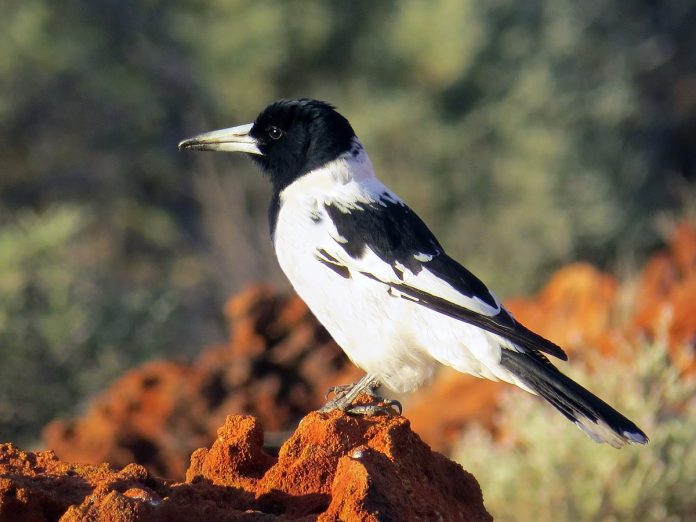
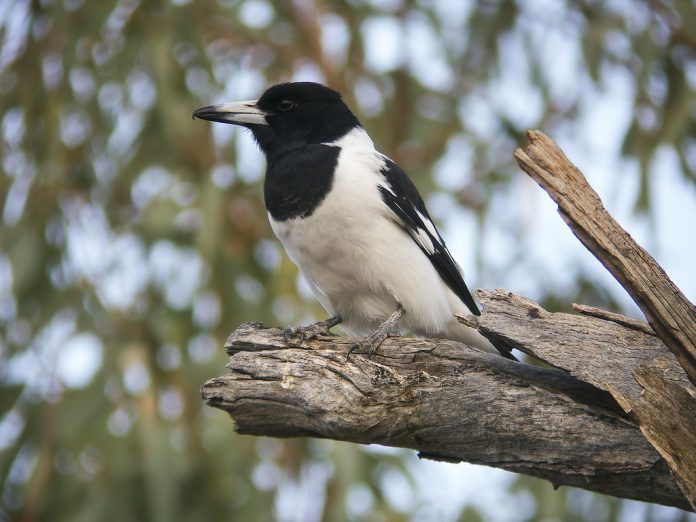
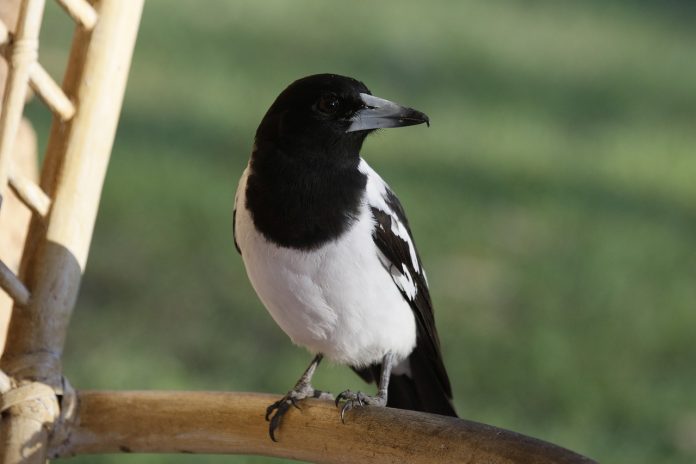
Read More – Golden Bowerbird

